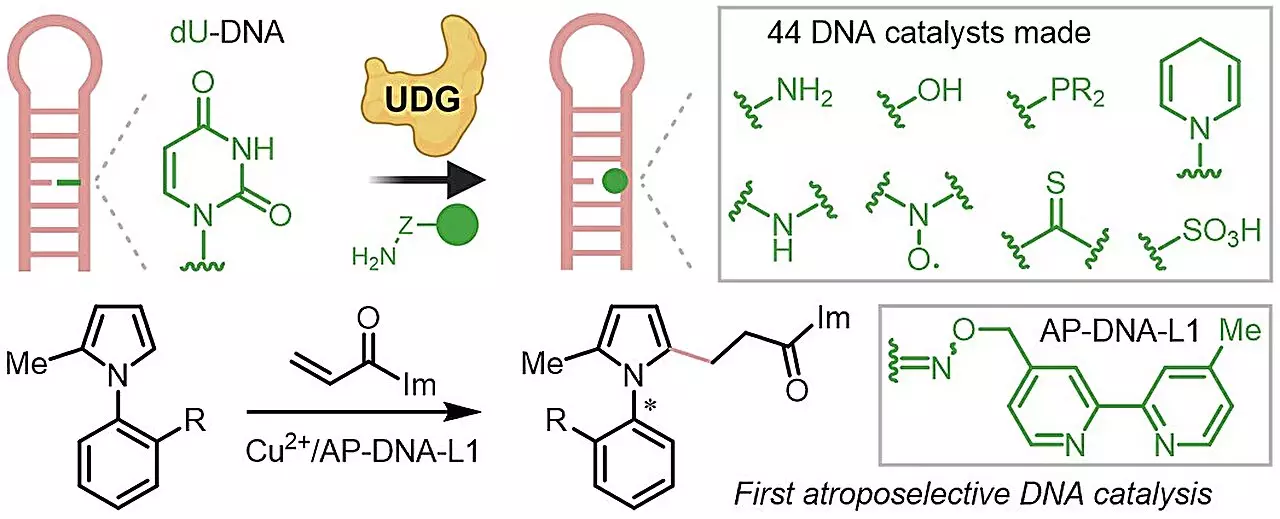In recent years, the intersection of chemistry and biotechnology has opened avenues for innovative solutions in the realm of catalyst development. A notable breakthrough comes from researchers at the National University of Singapore (NUS), who have ingeniously integrated DNA repair mechanisms with biorthogonal chemistry to create a variety of unique chiral deoxyribonucleic acid (DNA) catalysts. This approach not only enhances the efficacy of asymmetric catalysis but also signifies a monumental shift in how scientists can utilize biological materials in the laboratory.
Traditionally, asymmetric catalysis has relied heavily on enzyme catalysis, which employs biological proteins to accelerate chemical reactions. While effective, this method encounters several limitations. Enzymes are often unstable and require complex manipulation for effective application, presenting hurdles for researchers and practitioners alike. Moreover, such intricacies often necessitate a high level of expertise and sophisticated equipment, limiting accessibility.
Recognizing these challenges, researchers sought alternatives that could offer simplicity and resilience. DNA, being a stable and cost-efficient scaffold, emerged as a prime candidate. Its inherent programmability, owing to the unique base-pairing properties, allows for precise control, thus paving the way for more versatile catalysts.
The groundbreaking research spearheaded by Assistant Professor Zhu Ru-Yi emphasizes a novel strategy that merges enzymatic processes with chemical reactions. By utilizing DNA repair processes, the NUS team has effectively simplified the production of chiral DNA catalysts. This development democratizes the field of asymmetric catalysis, as it enables non-specialists to engage in DNA catalysis without the burden of advanced technical skills or costly equipment.
One of the standout features of this novel methodology lies in its compatibility with a myriad of functional groups. The biorthogonal chemistry used in this approach ensures that the reactions occur without disrupting the system’s existing functionalities, which is crucial for maintaining the integrity of the diverse chemical environments often encountered in catalytic processes.
The NUS team’s research culminated in the construction of a library consisting of 44 distinct DNA catalysts, each demonstrating enhanced enantioselectivity and broad substrate scope compared to their predecessors. Perhaps more notably, this research introduced the first instance of atroposelective DNA catalysis. This achievement is remarkable, as it allows for the synthesis of axially chiral compounds—molecules typically evading conventional bio-catalysis techniques due to their complex structures.
The robustness of the newly developed catalysts is evident, as they can accommodate a wide variety of structural forms with unprotected functional groups. This versatility highlights the potential for these DNA catalysts to be incorporated into various chemical reactions, expanding their application across multiple fields.
Looking to the future, the research team is poised to further explore strategies that enhance the selectivity and sustainability of chemical reactions through DNA catalysis. This pioneering work not only enhances our current understanding of asymmetric synthesis but may also catalyze new paradigms in green chemistry, providing a sustainable framework for future innovations in synthetic methodologies.


Leave a Reply